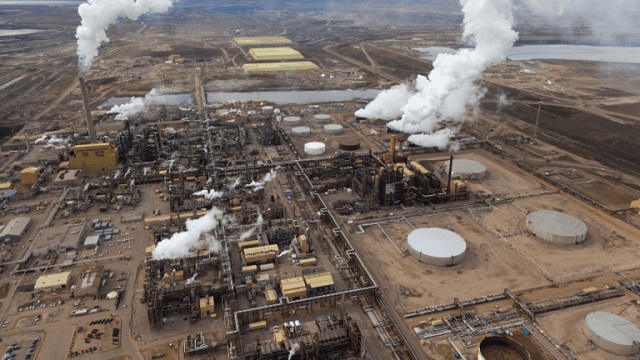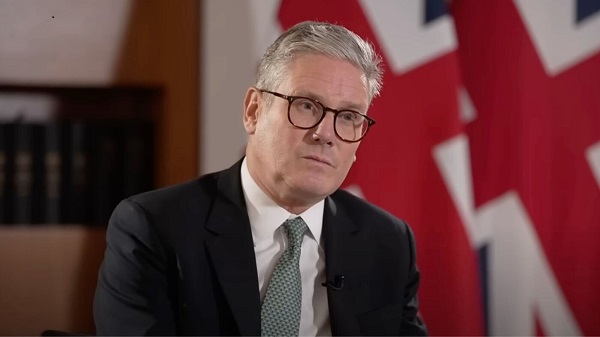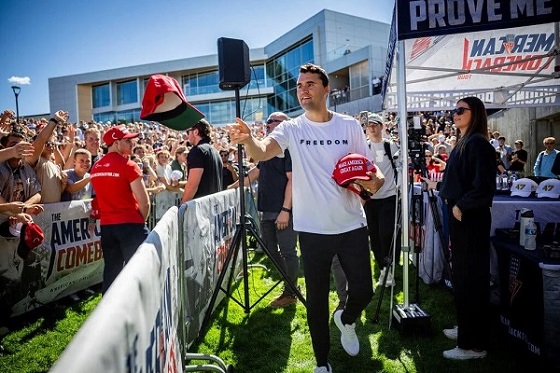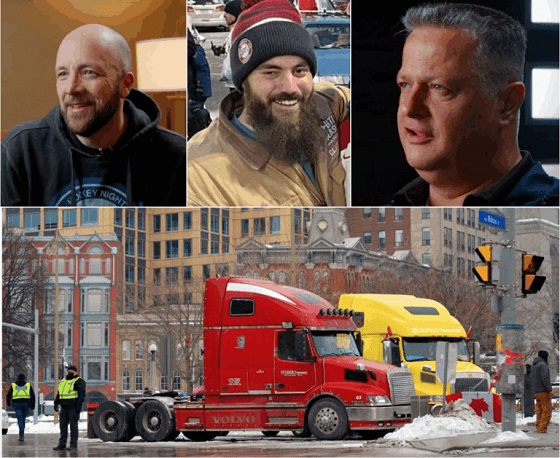Alberta
Why the oilsands’ weaknesses are turning into strengths

From the MacDonald Laurier Institute
By Heather Exner-Pirot
Global oil prices are recovering from a multi-year bust
Few industrial projects have been more maligned than Canada’s oilsands. It has been called tar sands, a carbon bomb, the “dirtiest oil on the planet.” It’s suffered through the shale revolution, the COVID-19 shutdown, and a torrent of ESG (Environmental, Social and Governance) divestment. Its grade of heavy oil has been discounted and shunned.
But despite the challenges, things are coming up roses. In almost every aspect of the sector that has looked weak in the past decade—costs, grade, carbon intensity—the oilsands are coming on strong, and poised to provide unprecedented revenue streams for Canadian public coffers.
Oilsands are known as “unconventional” oil, which is extraction from anything other than traditional, vertical wells. In northern Alberta, the expansive hydrocarbon resources are in bitumen form, a molasses-like consistency too heavy to flow on its own. It takes a lot of capital and energy to turn the oilsands’ oil into a product that can be transported, refined and used by consumers.
For this reason, the oilsands were seen in the early 2010s as an expensive form of oil, with high up-front costs and a high break-even price: up to USD$75/barrel for new oilsands mines. This made it difficult to compete with cheaper American shale, which came online at scale at the same time as the oilsands, to great chagrin in Calgary.
However, global oil prices are recovering from a multi-year bust, and new “in-situ” extraction technologies have greatly reduced oilsands recovery costs. Break-even prices now average less than USD$40/barrel, and BMO Capital Markets assessed in September that the average oilsands producers could cover their capital budgets and base dividends at USD$46/barrel. By contrast the average large U.S. producer requires USD$53.50/barrel. For new shale wells outside of Texas last year, it was $69/barrel.
Another advantage is that oilsands are low-decline, which means they have decades of inventory, or oil available to be extracted. Shale oil sites have declined as high as 50 percent in the first year. While the oilsands reap the benefits of past investments, shale producers need to continuously drill and invest in new production. (But they haven’t been of late: the U.S. oil rig count has fallen 21 percent since December 2022, largely because of new well costs.)
Another challenge for the oilsands has been its grade: “heavy” or dense, and “sour” or high in sulfur. Light, sweet crudes are easier to refine and have historically sold at a premium. The difference can be stark: at its worst in 2018, West Texas Intermediate (WTI) oil sold for USD$57 a barrel, compared to just USD$11 for heavy Western Canada Select (WCS).
But heavy oil has qualities that are desirable, even necessary for some refined products. Whereas light crude is primarily made into fuels, heavy oil is advantageous for plastics, petrochemicals, other fuels, and road surfacing: things we will still need in a post-combustion, net-zero world. Many American refineries are configured to process heavy oil. Because the U.S. produces virtually none itself, they depend on cheap Canadian sources.
Geopolitical factors are also bolstering heavy and sour oil. Recent production cuts by OPEC+, designed to lift global oil prices, have limited supply of medium and heavy sour grades, which matches the kind of oil the Biden Administration released in its big Strategic Petroleum Reserve sell-off last year. This has brought higher prices for heavy, sour oil, more good news for the oilsands.
As for the oilsands’ biggest Achilles heel, its carbon intensity, this is another weakness turning into a strength. The oilsands are geographically concentrated, with a small number of facilities producing large amounts of emissions. This makes them far easier to decarbonize than conventional oil, which needs huge fleets of rigs creating hundreds of emissions sources in order to produce comparable amounts of oil. Seizing the opportunity, the major oilsands producers are working together on one of the biggest carbon capture projects in the world, building a 400-km CO₂ pipeline that could link over 20 CCS facilities with a carbon storage hub in northeast Alberta. Small modular reactors are another option being explored to reduce emissions. It’s not easy or cheap, but it’s possible to reach net zero, which producers plan to do by 2050.
All of this is not just good news for the oilsands, but for Albertans and Canadians as well. In 2022, royalties going into public coffers from oil and gas extraction hit a record $33.8 billion; that’s more than all royalties from 2016-20 combined. The boost comes not just from higher prices but from Alberta’s strategy to charge significantly higher royalties—up to 40 percent—from oilsands facilities whose upfront development costs have been paid off and revenues are exceeding operating expenses.
A large number of facilities have already reached this threshold, and more are added each year. This flexible new paradigm of permanently higher royalties helps governments moderate the budget rollercoaster of volatile oil prices: nine times more at $55/barrel, and four and half times more at $120/barrel. Next year, when the TMX pipeline adds more than half a million barrels a day of capacity from the oilsands to new markets, the value of royalties will also increase, along with corporate taxes.
Of course, the oilsands still face headwinds from Ottawa, none bigger than a proposal to reduce oil and gas emissions by 42 percent (from 2019 levels) by 2030. Although the oil and gas sector has invested heavily in emissions reductions, and greenhouse gas intensity per barrel fell 20 percent between 2009 and 2020, there is no way to meet the new target without cutting production. S&P Global estimates that 1.3 million barrels of daily output will need to be slashed, which would be an existential threat to the sector. Fortunately, the political tide in Canada is turning in such a way that the oilsands could hang on long enough to see friendlier policies.
Finally, the oilsands remain unloved by investors, although the tide has been turning with higher prices. Their enterprise multiple (EV/DACF), a standard valuation formula, is on average 5.8x as of September and was even lower in 2022. This is much lower than the S&P 500, which has averaged between 11 to 16x in the last few years. In Calgary this has been called the Ottawa penalty box: the only logical explanation for their low valuation seems to be the lack of confidence investors associate with the Canadian energy policy landscape. At any rate, oilsands companies are currently free cashflow machines and are rewarding the shareholders they do have with share buybacks.
After nearly a decade on their back foot, the oilsands have reason for optimism. Lots of people still love to hate them, but they’re starting to rack up some wins.
Heather Exner-Pirot is the director of energy, natural resources and environment at the Macdonald-Laurier Institute.
Alberta
Sylvan Lake high school football coach fired for criticizing gender ideology sends legal letter to school board

From LifeSiteNews
The letter on behalf of Alberta high school volunteer football coach Taylor ‘Teej’ Johannesson mentions ‘workplace harassment’ while demanding his job back.
A Sylvan Lake high school football coach who was fired for sharing his views opposing transgender ideology on social media in a video discussing his Christian faith sent a legal demand to his former school board demanding he get his job back.
H.J. Cody High School volunteer coach Taylor “Teej” Johannesson, as reported by LifeSiteNews, earlier this month was fired by his school’s principal because he spoke out against gender-confused youth who “take their hatred of Christians” to another level by committing violent acts against them.
School principal Alex Lambert fired Teej, as he is known, as a result of a TikTok video in which he speaks out against radical gender ideology and the dangers it brings.
In a recent update involving his case, local media with knowledge of Johannesson’s issues with the principal at H.J. Cody High School in Sylvan Lake, Alberta, confirmed a legal demand letter was sent to the school.
The letter reads, “From his perspective, this opposition is consistent with the Alberta government’s position and legislation prohibiting prescribing prescription hormones to minors and providing care to them that involves transition surgeries.”
In the letter, the school board’s “workplace harassment” procedure is mentioned, stating, “Any act of workplace harassment or workplace violence shall be considered unacceptable conduct whether that conduct occurs at work, on Division grounds, or at division-sponsored activities.”
The legal demand letter, which was sent to school officials last week, reads, “Given that Mr. Johannesson’s expression in the TikTok Video was not connected to his volunteer work, the principal and the division have no authority to regulate his speech and punish him by the Termination decision, which is ultra vires (“beyond the powers.)”
Johannesson has said, in speaking with local media, that his being back at work at the school as a volunteer coach has meaning: “It’s about trying to create some change within the school system.”
He noted how, for “too long,” a certain “political view, one ideology, has taken hold in the school system.”
“I’m hoping that this demand letter, and all the attention that they’ve gotten over this, causes them to make some change,” he stated.
Johannesson has contacted Alberta’s Chief of Staff for the Minister of Education about his firing and was told that there is a board meeting taking place over the demand letter.
According to Teej, Lambert used his TikTok video as an excuse to get rid of someone in the school with conservative political views and who is against her goal to place “safe space stickers” all over the school.
Teej has been in trouble before with the school administration. About three years ago, he was called in to see school officials for posting on Twitter a biological fact that “Boys have a penis. Girls have a vagina.”
Alberta’s Conservative government under Premier Danielle Smith has in place a new policy protecting female athletes from gender-confused men that has taken effect across the province.
As LifeSiteNews previously reported, the Government of Alberta is currently fighting a court order that is blocking the province’s newly passed ban on transgender surgeries and drugs for children.
Alberta also plans to ban books with sexually explicit as well as pornographic material, many of which contain LGBT and even pedophilic content, from all school libraries.
Alberta
Parents group blasts Alberta government for weakening sexually explicit school book ban

From LifeSiteNews
By
The revised rules no longer place restrictions on written descriptions of sexual content.
Some parental rights advocates have taken issue with the Conservative government of Alberta’s recent updates to a ban on sexually explicit as well as pornographic material from all school libraries, saying the new rules water down the old ones as they now allow for descriptions of extreme and graphic sexual acts in written form.
As reported by LifeSiteNews last week, Alberta Education Minister Demetrios Nicolaides of the ruling United Conservative Party (UCP) released revised rules outlining the province’s ban on sexually explicit content in school libraries.
The original ban included all forms of sexually explicit as well as pornographic material. However, after a large public school board alleged the ban applied to classic books, the government changed the rules, removing a clause for written sexual content that has some parental rights groups up in arms.
Tanya Gaw, founder of the conservative-leaning Action4Canada, noted to media that while she is happy with Premier Danielle Smith for the original book ban, she has deep concerns with the revised rules.
“We are very concerned about the decision that no longer places restrictions on written descriptions of those acts, which is problematic,” she said in an interview with The Epoch Times.
Gaw noted how kids from kindergarten to grade 12 should “never” be “exposed to graphic written details of sex acts: incest, molestation, masturbation, sexual assaults, and profane vulgar language.”
According to John Hilton-O’Brien, who serves as the executive director of Parents for Choice in Education, the new rule changes regarding written depictions “still shifts the burden onto parents to clean up what should never have been purchased in the first place.”
He did say, however, that the new “Ministerial Order finally makes catalogs public, and what we see there is troubling.”
Alberta’s revised rules state that all school library books must not contain “explicit visual depictions of a sexual act.” To make it clear, the standards in detail go over the types of images that are banned due to their explicit pornographic nature.
All Alberta schools have until October 31 to provide a list of books that will be removed under the new rules, with the ban taking effect on January 5, 2026.
As reported by LifeSiteNews in May, Smith’s UCP government went ahead with plans to ban books with sexually explicit as well as pornographic material, many of which contain LGBT and even pedophilic content, from all school libraries.
The ban was to take effect on October 1.
The UCP’s crackdown on sexual content in school libraries comes after several severely sexually explicit graphic novels were found in school libraries in Calgary and Edmonton.
The pro-LGBT books in question at multiple school locations are Gender Queer, a graphic novel by Maia Kobabe; Flamer, a graphic novel by Mike Curato; Blankets, a graphic novel by Craig Thompson; and Fun Home, a graphic novel by Alison Bechdel.
-

 Business1 day ago
Business1 day agoDeportations causing delays in US construction industry
-

 Frontier Centre for Public Policy21 hours ago
Frontier Centre for Public Policy21 hours agoBloodvein Blockade Puts Public Land Rights At Risk
-

 Alberta1 day ago
Alberta1 day agoParents group blasts Alberta government for weakening sexually explicit school book ban
-

 Crime2 days ago
Crime2 days agoCanadian teacher showed Charlie Kirk assassination video to young students, said he deserved to die
-

 International2 days ago
International2 days agoTrump to Confront Starmer Over UK Free Speech Laws During State Visit
-

 Automotive1 day ago
Automotive1 day agoMichigan could be a winner as companies pull back from EVs
-

 International23 hours ago
International23 hours agoFrance records more deaths than births for the first time in 80 years
-

 National22 hours ago
National22 hours agoChrystia Freeland resigns from Mark Carney’s cabinet, asked to become Ukraine envoy






